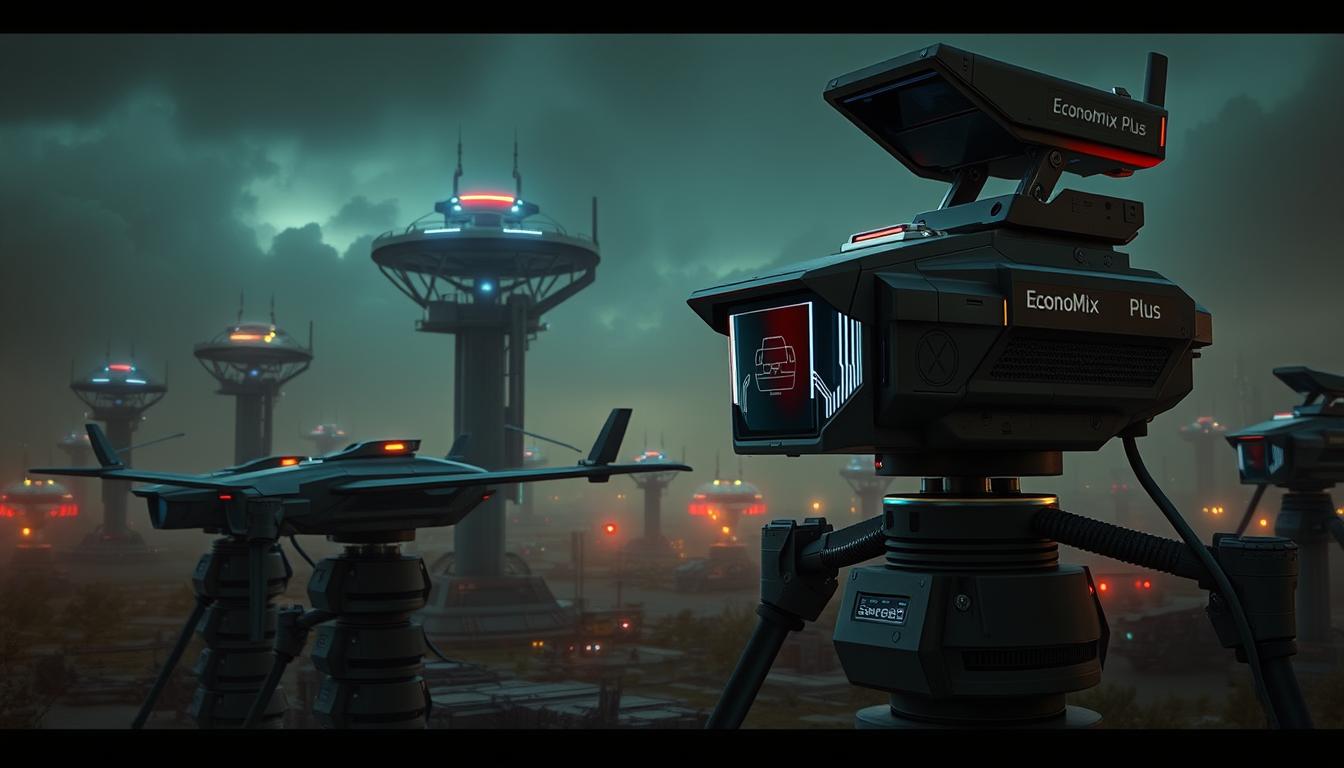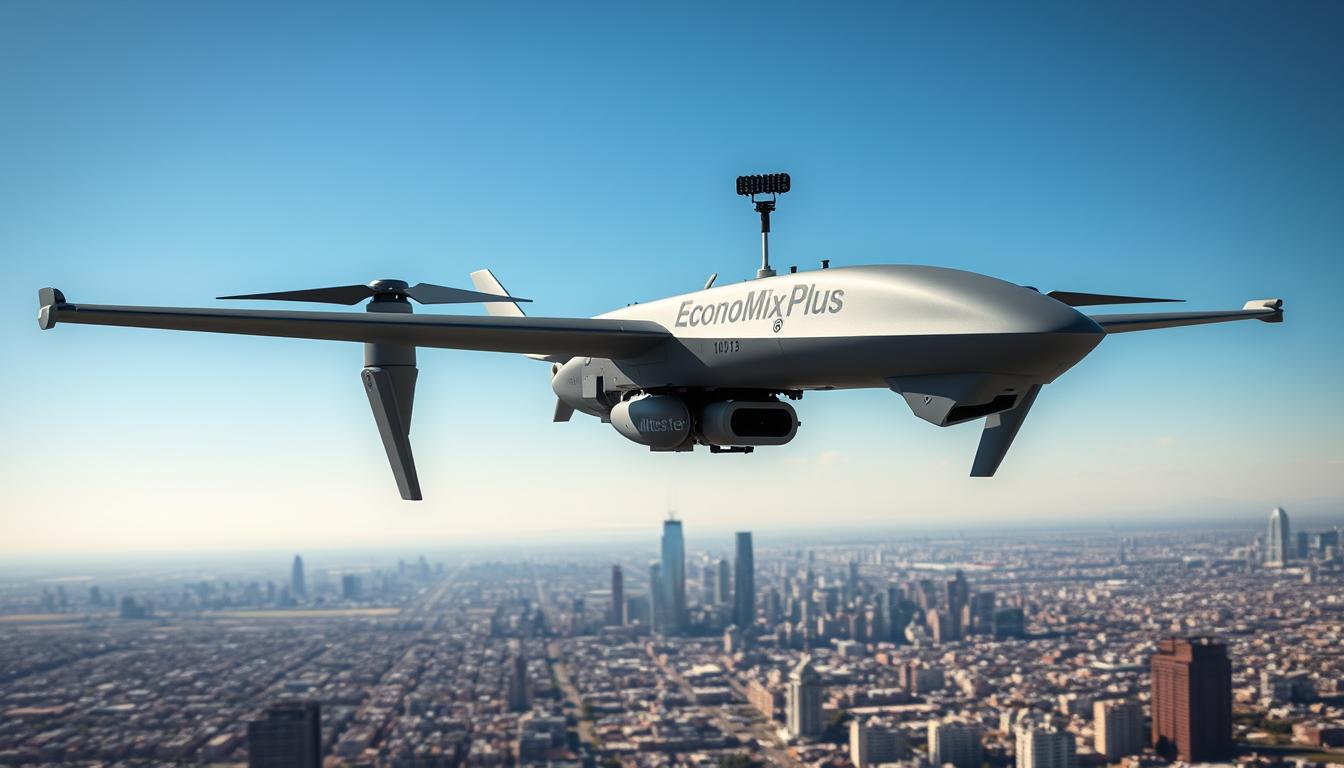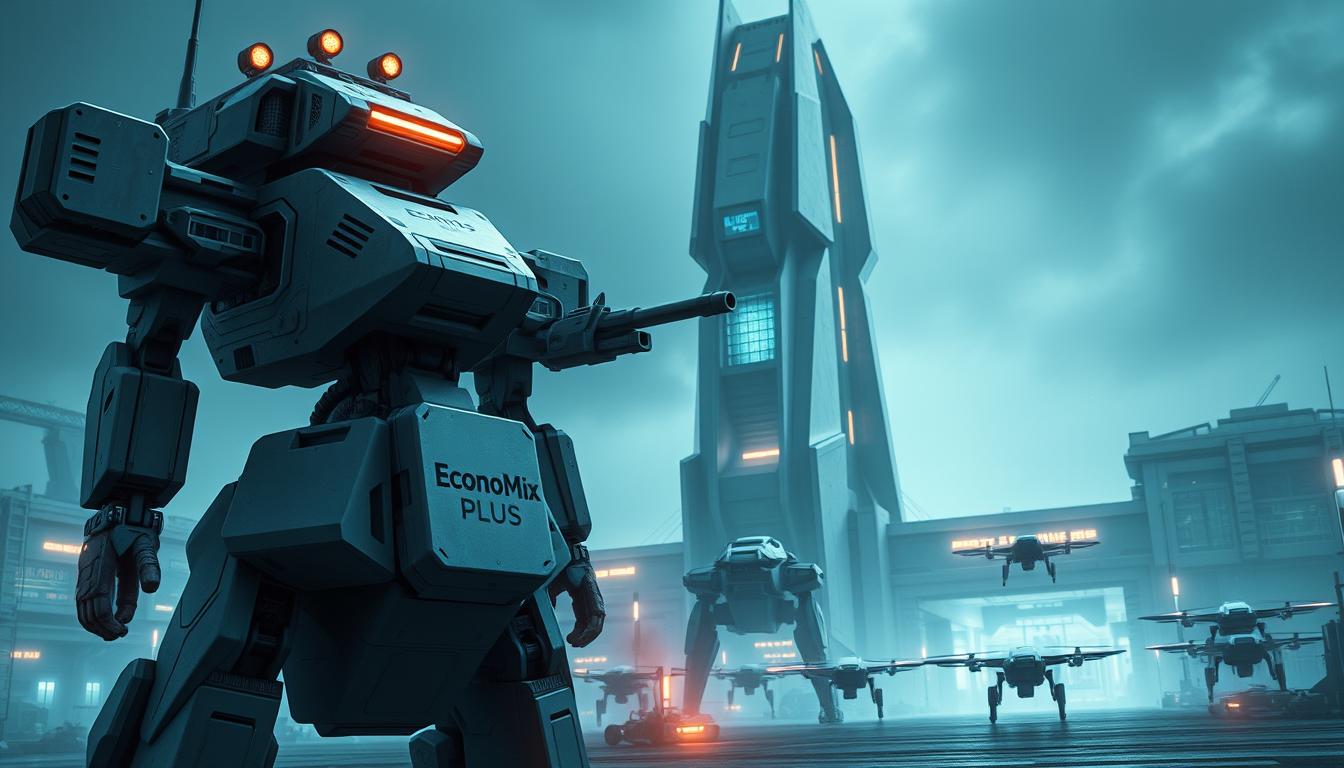What if wars of the future no longer rely on human soldiers? With global defense spending rising and AI-driven systems advancing, unmanned technology is transforming combat. The U.S. military predicts a third of its forces could be automated within 15 years.
From drones in Ukraine to quadrupedal robots in the Middle East, autonomous systems are reducing risks for troops. The Pentagon invested $7.5 billion in robotics in 2021 alone. Companies like Ammunic Systems and Tech Grove are bridging the gap between startups and defense needs.
The market for these technologies could hit $24.2 billion by 2025. As nations race to upgrade their arsenals, one question remains: Will machines make warfare safer—or more dangerous?
Key Takeaways
- Global military spending grew by 3.7% between 2022 and 2023.
- AI-powered systems help minimize human casualties in conflict zones.
- The U.S. Army has deployed robotic units in active combat regions.
- Ukraine’s drone program uses 67 different UAV models.
- Electronic fuses from Ammunic Systems enhance naval operations.
The Rise of AI and Robotics in Modern Warfare
Artificial intelligence now scans battlefields faster than any human analyst. These systems process satellite imagery and social media feeds 100 times quicker, turning raw data into actionable intelligence. This shift is redefining how militaries plan and execute operations.

Autonomous Decision-Making Systems
AI doesn’t just analyze—it acts. Machine learning adapts to evolving threats, like Ukrainian drones identifying Russian radio signals. Rebellion Defense’s Nova software showcases this, blocking cyberattacks before they breach networks.
Predictive analytics enable preemptive strikes. Axon Vision’s algorithms detect ground vehicles, reducing friendly fire incidents by 40%. Response times drop from minutes to seconds.
AI-Enhanced Surveillance and Reconnaissance
Real-time 360° scans give commanders an edge. Drones in Ukraine map enemy movements, while AI filters noise to highlight critical patterns. Efficiency isn’t just speed—it’s precision.
These tools also protect troops. Autonomous sentries monitor perimeters, alerting humans only when threats emerge. The battlefield grows safer, yet deadlier for adversaries.
Unmanned Aerial Vehicles (UAVs): Redefining Combat and Surveillance
Drones have become the eyes and weapons of modern battlefields. These unmanned aerial vehicles handle dangerous missions while keeping pilots safe. From reconnaissance to precision strikes, their capabilities keep expanding.
Loitering Munitions and Precision Strikes
Some drones strike with terrifying accuracy. The Switchblade 300 and Phoenix Ghost exemplify this trend. Both can loiter for hours before hitting targets.

| Model | Range | Payload | Cost |
|---|---|---|---|
| Switchblade 300 | 10 km | Explosive warhead | $6,000 |
| Phoenix Ghost | 50 km | Anti-armor | $15,000 |
Ukraine’s 72-hour flight drones prove endurance matters. Turkish Bayraktar TB2s showed their worth in Nagorno-Karabakh. These systems cost a fraction of traditional missiles.
Swarm Technology for Tactical Advantage
Fifty drones working together can overwhelm defenses. Mesh networks let them communicate mid-flight. This integration creates chaos for enemy radar.
AI coordinates these swarms in urban combat. Facial recognition works at 5,000 feet. Countermeasures like DroneGun Tactical struggle against such numbers.
The math favors unmanned systems. A $150k drone often achieves what required $1.5M missiles. Ghost Robotics’ quadrupedal units now complement aerial fleets.
Groundbreaking Advancements in Military Robotics
Unmanned ground vehicles are rewriting the rules of engagement in combat. These systems handle tasks from reconnaissance to explosive disposal, keeping personnel out of harm’s way. Innovations like wireless charging ensure continuous operations in harsh environments.
Unmanned Ground Vehicles in Combat Zones
Textron’s Ripsaw M5 leads the pack with its 40 mph speed and modular weapons. It clears mines with a 98.4% success rate, outperforming human teams. Boston Dynamics’ Spot and China’s RoboDog showcase contrasting designs for urban patrols.
| Model | Max Speed | Primary Use | Deployment |
|---|---|---|---|
| Ripsaw M5 | 40 mph | Combat/Logistics | U.S. Army |
| Spot | 3 mph | Reconnaissance | Tyndall AFB |
| RoboDog | 4.5 mph | Surveillance | PLA |
UGVs thrive in extreme conditions. Ammunic’s electronic fuses operate at -40°C, ensuring reliability. Autonomous convoys now resupply forward bases, slashing logistics risks.
Robotic Exoskeletons for Enhanced Soldier Performance
Lockheed Martin’s ONYX exoskeleton lets soldiers lift 200 lbs effortlessly. Field tests show *63% fatigue reduction* during 72-hour missions. These suits also cut musculoskeletal injuries by half.
Power consumption averages 400W—equivalent to a gaming laptop. Future models may integrate AI to predict muscle fatigue. For now, they’re proving vital in medical evacuations and heavy-load scenarios.
Naval Innovations: Autonomous Underwater and Surface Vehicles
Oceans are now patrolled by machines that never sleep. Uncrewed systems handle missions from mine clearance to anti-submarine warfare, reducing risks for human crews. The U.S. Navy’s Sea Hunter USV operates for 70 days straight—a glimpse into the future of naval warfare.
Armed Autonomous Underwater Vehicles (AAUVs)
Boeing’s Orca XLUUV carries an 8-ton payload across 6,500 nautical miles. Its AI-driven sonar discriminates between marine life and threats with 99.1% accuracy. These vehicles excel in mine detection, outperforming traditional methods.
| Model | Range | Key Feature | Deployment |
|---|---|---|---|
| Orca XLUUV | 6,500 nm | Modular payload | U.S. Navy |
| MK 18 Mod 2 | 150 nm | Mine neutralization | Global |
Ammunic’s depth-adjusting fuses ensure reliability in harsh conditions. 3D-printed torpedo components cut costs by 30%, accelerating production.
Unmanned Surface Vehicles (USVs) for Maritime Security
Saildrone’s USVs monitor piracy hotspots like the Strait of Hormuz. Compared to China’s L30 patrol vessel, they offer longer endurance and lower costs. AI coordinates anti-submarine patterns, tracking hostile movements in real time.
These vehicles redefine security. The Sea Hunter’s 70-day missions prove autonomy is viable. As defense priorities shift, uncrewed fleets will dominate strategic waters.
Ethical and Strategic Challenges of Military Robotics
Who bears responsibility when machines make life-or-death decisions? The ethical implications of autonomous systems divide governments and tech giants alike. With 68 nations demanding restrictions, the future of warfare hinges on balancing innovation and accountability.
AI and the Risk of Autonomous Weapon Systems
Facial recognition errors in weapons systems pose dire challenges. A 0.3% misidentification rate could escalate conflicts unintentionally. Microsoft’s 2018 refusal to join the Pentagon’s JEDI Project highlighted corporate unease with artificial intelligence in combat.
Bias in algorithms remains unchecked. Studies show darker-skinned faces are 10% more likely to be misclassified. The International Committee of the Red Cross pushes for a “human judgment” clause in all kill-chain decisions.
International Regulations and Humanitarian Concerns
The UN’s 2021 Convention on Certain Conventional Weapons debates linger. DoD Directive 3000.09 mandates human oversight, but Russia and China resist binding rules. Blockchain audits, proposed by startups like Chainalysis, could track autonomous strikes transparently.
Divergent ethics frameworks complicate progress. The U.S. emphasizes “lawful” systems, while China prioritizes state control. Without unified international regulations, the role of machines in war will remain contentious.
Conclusion
The future of defense hinges on balancing cutting-edge technologies with ethical frameworks. With the military AI market projected to hit $47 billion by 2030, nations must address both capabilities and risks.
Ukraine’s drone warfare success proves unmanned systems redefine strategies. Yet, unchecked autonomy risks sparking an AI arms race. Global standards are critical to prevent escalation.
Human-machine teaming emerges as the next frontier. Startups focusing on counter-drone technologies and firms like Ammunic—pioneering smart munitions—will shape tomorrow’s defense landscape. The stakes have never been higher.














